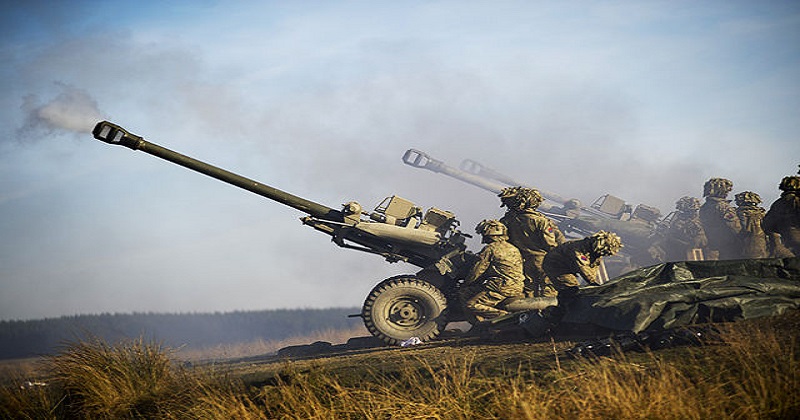
The defence ministry is moving files for placing a repeat order for 200 more tracked self-propelled howitzers worth Rs 9,600 crore. The order, to be placed with Larsen & Toubro (L&T) this year, will be the biggest ever placed with a private-sector Indian defence company, and will contribute to reducing defence imports by creating an industrial base and modernizing the military.
Self-propelled guns are mounted on tanks and are designed to provide firepower to mobile columns. K9 Vajras weigh 50 tonnes and can fire shells over 50 kilometers. With the help of South Korean defence firm Hanwha Defense, L&T delivered 100 K-9 Vajras worth Rs 4,500 crore. The 100th gun was delivered to the army on February 20, 2021, after the contract was signed in May 2017. During this government, it remains the largest Make in India programme.
The army can also acquire modern artillery systems more quickly this way. By placing a new order by this year, the guns will begin rolling out of Hazira by 2023 with all deliveries completed by 2028. It is expected that many of these guns will be specially modified for use in the cold deserts of Ladakh and Sikkim.
In the defence ministry’s biennial land and naval systems exhibition, Defexpo 2022, this massive order is likely to be one of the highlights. Defexpo will be held in Gandhinagar, Gujarat, between March 10 and 13. The move coincides with the government’s effort to make the state of Prime Minister Narendra Modi a hub for defence industries. A K9 regiment had been planned by the army only until last year. When did this become a humongous 10 regiments? A major reason was China’s military deployment, which began in eastern Ladakh in May 2020.
The Indian army’s five existing regiments of Vajras (each with 18 guns, excluding the two in reserve) were not formed for mountain warfare, but to operate with its three strike corps in the plains of Punjab and semi-deserts of Rajasthan. When the People’s Liberation Army deployed and activated its entire northern and eastern borders, the army scrambled to acquire modern artillery. A trial of three K9s was conducted last year in eastern Ladakh. This unusual deployment owes its origin to an artillery officer in Udhampur.
Rather than using a tank transporter-trailer, they drove up from Leh to the eastern Ladakh forward areas on their own power. As it turns out, these guns were originally designed to operate in South Korea, a mountainous country with a hostile neighbor and climatic conditions similar to eastern Ladakh. L&T engineers needed to modify the Indian army K9s with a special low-temperature kit in the field. The engineers modified the range tables and software that guided these guns in the field. Guns performed exceptionally well, which strengthened their case for more weapons.
The army failed to acquire its own howitzers. Athos towed howitzers were repeatedly rebuffed by the Ministry of Defense and the case was finally closed late last year. Imports, it would appear, would kill indigenous howitzer capabilities developed over the years by a variety of private and public developers. According to the army, the two most promising indigenous artillery systems have yet to deliver. An army order for 114 Dhanush guns has been put at risk because of design defects. The Dhanush is an indigenous version of the FH-77B Bofors. DRDO’s Advanced Towed Array Gun System (ATAGS), built by Tata Defense and Bharat Forge, is yet to pass army trials. To pass the stringent tests, these guns may need to wait at least until 2025.
So, the army cannibalized its requirement for nine regiments of wheeled howitzers to make room for the K9s – a 155 mm howitzer mounted on a 6×6 armoured vehicle. Wheeled howitzers were one of five types of howitzers conceived after the Kargil War and whose requirement was accepted by the government. It was planned to buy 3,000 new guns, including those mounted on towed, wheeled, and tracked (on a tank chassis, such as the K-9) and ultra-light howitzers. Only the wheeled howitzers and mounted gun systems are to be acquired. The second category has been scrapped.

Post Your Comments